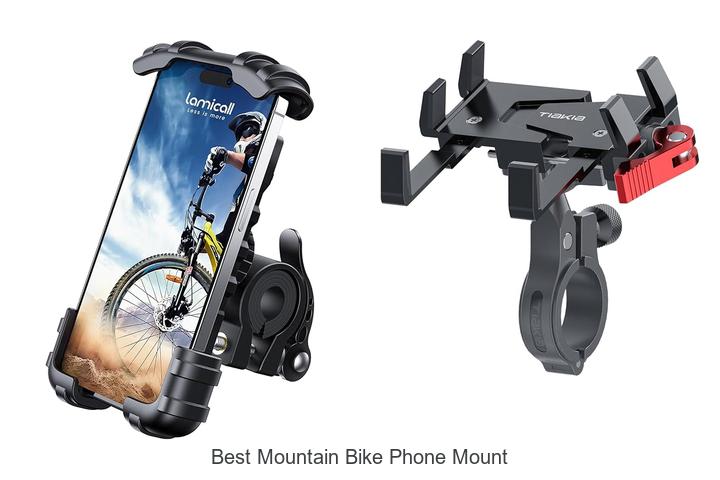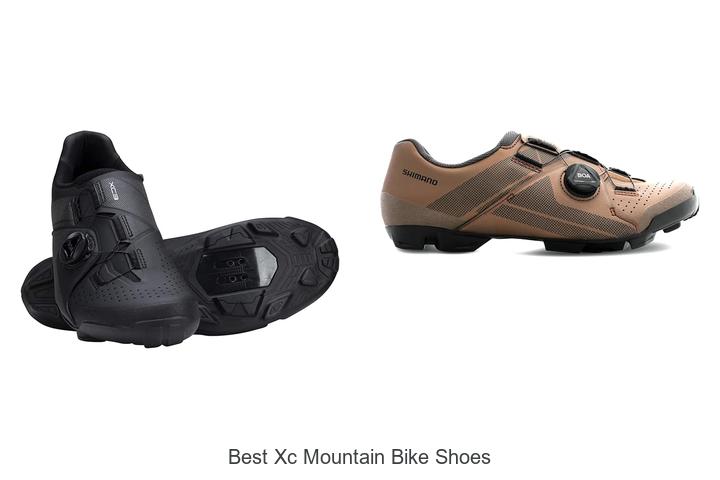How to Bleed Mountain Bike Brakes: Easy Step-by-Step Guide
Key Takeaways
- Bleeding mountain bike brakes removes trapped air and old fluid, restoring firm lever feel and reliable stopping power for safer rides.
- Use the appropriate brake fluid (mineral oil or DOT) compatible with your brake system to avoid damage and ensure optimal performance.
- Proper preparation, including removing wheels and pads and securing the bike, is essential for an effective and clean bleeding process.
- Follow step-by-step bleeding instructions carefully, checking for air bubbles and leaks to maintain brake responsiveness and safety.
- Regular brake maintenance, including pad inspection, fluid replacement, and cleaning, prolongs brake life and enhances performance.
- Troubleshoot common issues like spongy levers and fluid leaks promptly to prevent brake failure and costly repairs.
If your mountain bike brakes feel spongy or unresponsive it’s probably time to bleed them. Bleeding your brakes removes trapped air and old fluid that can compromise stopping power. Doing this yourself saves time and money while keeping your ride safe and smooth.
You don’t need to be a mechanic to get the job done. With the right tools and a clear step-by-step approach you can restore your brakes’ performance at home. This guide will walk you through the essential steps so you can confidently bleed your mountain bike brakes and get back on the trail with full control.
Understanding Mountain Bike Brake Systems
Mountain bike brake systems vary in design and function, influencing how you maintain and bleed them. Knowing your brake system type and the role bleeding plays helps ensure effective braking.
Types of Brake Systems
You encounter two main brake system types on mountain bikes: hydraulic and mechanical. Hydraulic brakes use fluid to transfer force from the lever to the caliper, offering stronger and more consistent stopping power. Mechanical brakes operate using cables, which pull the brake arms to press pads against the rotor; they require less complex maintenance but don’t offer the same precision. Among hydraulic systems, you’ll find brands like Shimano, SRAM, and Hope, each with specific bleed procedures and fluid types, such as DOT fluid or mineral oil.
Importance of Bleeding Brakes
You maintain optimal brake performance by bleeding mountain bike brakes regularly. This process removes air bubbles trapped inside the hydraulic line that cause spongy lever feel and reduce braking efficiency. Contaminated or old brake fluid also compromises responsiveness and can damage internal components. Bleeding restores firm lever feel and reliable stopping power, preventing potential safety risks during your rides.
Tools and Materials Needed
Bleeding mountain bike brakes requires specific tools and materials to ensure a clean, effective process. Gather everything before starting to avoid interruptions that affect brake performance.
Essential Tools for Bleeding
- Bleed kit: Includes syringes, hoses, and bleed blocks designed for your brake model.
- Allen wrenches: Common sizes like 2mm, 3mm, 4mm, and 5mm fit the bleed port bolts and lever clamps.
- Torque wrench: Ensures bolts tighten to manufacturer specifications and prevents damage.
- Clean rags: Absorb brake fluid spills and keep your workspace tidy.
- Disposable gloves: Protect your skin from corrosive brake fluid.
- Isopropyl alcohol (90% or higher): Cleans brake components before and after bleeding.
- Container or tray: Catches old brake fluid during the bleed process.
- Rubber mallet (optional): Helps seat bleed blocks gently without damaging components.
Brake Fluid Types
- Mineral oil: Used by brands like Shimano; compatible only with mineral oil systems.
- DOT fluid: Common in SRAM and Formula brakes; available as DOT 3, 4, or 5.1 with specific compatibility.
- Important: Never mix mineral oil and DOT fluid, as they are chemically incompatible and cause brake failure.
- Storage: Keep brake fluids sealed and stored in a cool, dry place to maintain effectiveness.
Ensure you use the correct fluid type for your brake system to maintain performance and safety during bleeding.
Step-by-Step Guide on How to Bleed Mountain Bike Brakes
Follow precise steps to effectively bleed your mountain bike brakes and restore their responsiveness. Proper preparation and careful execution ensure safe and reliable braking.
Preparing the Bike and Workspace
Secure your bike on a stable stand to keep it steady. Clear your workspace of clutter and cover surfaces with rags or paper towels to catch any fluid spills. Gather all tools: the bleed kit, correct brake fluid (mineral oil or DOT, depending on your system), Allen wrenches, a torque wrench, gloves, and isopropyl alcohol for cleaning. Avoid mixing brake fluids, which risks brake failure.
Removing the Wheel and Brake Pads
Remove the wheel on the side you will bleed to access the brake caliper easily. Use an Allen wrench to remove the brake pads or pry them out if necessary. Insert a pad spacer or clean old pads to prevent the pistons from moving during bleeding. This step protects piston alignment and avoids damage.
Attaching the Bleed Kit
Locate the bleed port on the brake lever or caliper. Attach the bleed syringe or funnel securely, ensuring no leaks. Position a container under the caliper to collect old fluid. Keep the lever in the correct position specified by the manufacturer to allow fluid to flow properly through the system.
Flushing and Refilling the Brake Fluid
Push fresh brake fluid slowly through the system using the syringe or funnel. Observe fluid exiting the caliper, checking for air bubbles. Continue until fluid runs clear and bubble-free. Pull the lever gently but firmly several times to assist fluid movement. Close bleed ports securely once complete to avoid leaks and contamination.
Reassembling and Testing the Brakes
Reinstall brake pads and secure them with the appropriate torque. Reattach the wheel and ensure it spins freely without brake drag. Clean any spilled fluid from brake components using isopropyl alcohol. Test brake lever pressure by squeezing it firmly; it should feel firm and responsive. Repeat bleeding if the lever still feels spongy or soft.
Common Issues and Troubleshooting Tips
Mountain bike brake bleeding often encounters specific problems. Recognizing these issues helps maintain brake performance and safety.
Air Bubbles in the Brake Line
Air bubbles reduce braking power and cause a soft lever feel. You can spot bubbles when fluid flows unevenly during bleeding. Prevent this by keeping the brake lever squeezed while opening bleed valves. Shake or gently tap the brake hose and caliper to release trapped air. Repeat the bleeding process if bubbles persist.
Brake Lever Sponginess
Spongy brake levers indicate trapped air or contaminated fluid. You can resolve this by fully flushing the brake system with fresh, compatible brake fluid as per manufacturer guidelines. Ensure brake pads are correctly installed; worn or glazed pads affect lever feedback. Adjust the lever reach if sponginess continues after bleeding.
Fluid Leaks and How to Fix Them
Fluid leaks reduce brake pressure and damage components. You can locate leaks around bleed nipples, caliper seals, or hose fittings. Tighten loose connections carefully to avoid stripping threads. Replace damaged seals or hoses using OEM parts. Clean leaked fluid immediately to prevent damage to paint or grips. Test brakes after repair to confirm leak elimination.
Maintenance Tips for Long-Lasting Brake Performance
Follow these maintenance tips to keep your mountain bike brakes performing reliably and safely over time.
- Inspect brake pads and rotors frequently. Replace worn pads once the pad thickness reaches 1.5mm or less to maintain effective stopping power. Check rotors for warping or deep grooves that can reduce braking efficiency.
- Clean brake components regularly. Use isopropyl alcohol and clean rags to wipe down rotors and calipers. Avoid using lubricants or grease near braking surfaces, as contaminants can cause noise and reduce friction.
- Check brake fluid condition and level monthly. Replace hydraulic fluid every 6 to 12 months or sooner if it appears dark or cloudy to prevent moisture buildup that compromises brake responsiveness.
- Bleed brakes promptly when lever feel becomes spongy or travel increases. Regular bleeding removes air bubbles and old fluid, preventing brake fade and ensuring consistent lever response.
- Avoid over-tightening bolts and fittings. Use a torque wrench to tighten caliper bolts, lever clamps, and bleed port screws to manufacturer specifications to prevent damage and leaks.
- Store and handle brake fluid properly. Keep mineral oil or DOT fluid sealed and away from moisture and dirt. Dispose of used fluid following local hazardous waste guidelines.
- Perform test rides after maintenance. Confirm brakes engage smoothly without delay or pulsing, and verify no unusual noises arise during braking.
Applying these tips extends your brake system’s life, enhances safety, and maintains optimal control on demanding trails.
Conclusion
Bleeding your mountain bike brakes is a key step to keeping your ride safe and responsive. With the right tools and careful attention, you can tackle this maintenance task yourself and avoid the frustration of spongy brakes. Regular upkeep not only extends the life of your braking system but also gives you confidence on every trail.
By staying proactive and addressing brake performance early, you ensure smooth stopping power when it matters most. Remember, a well-maintained brake system means better control, increased safety, and more enjoyable rides every time you hit the trail.





